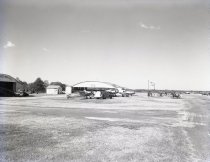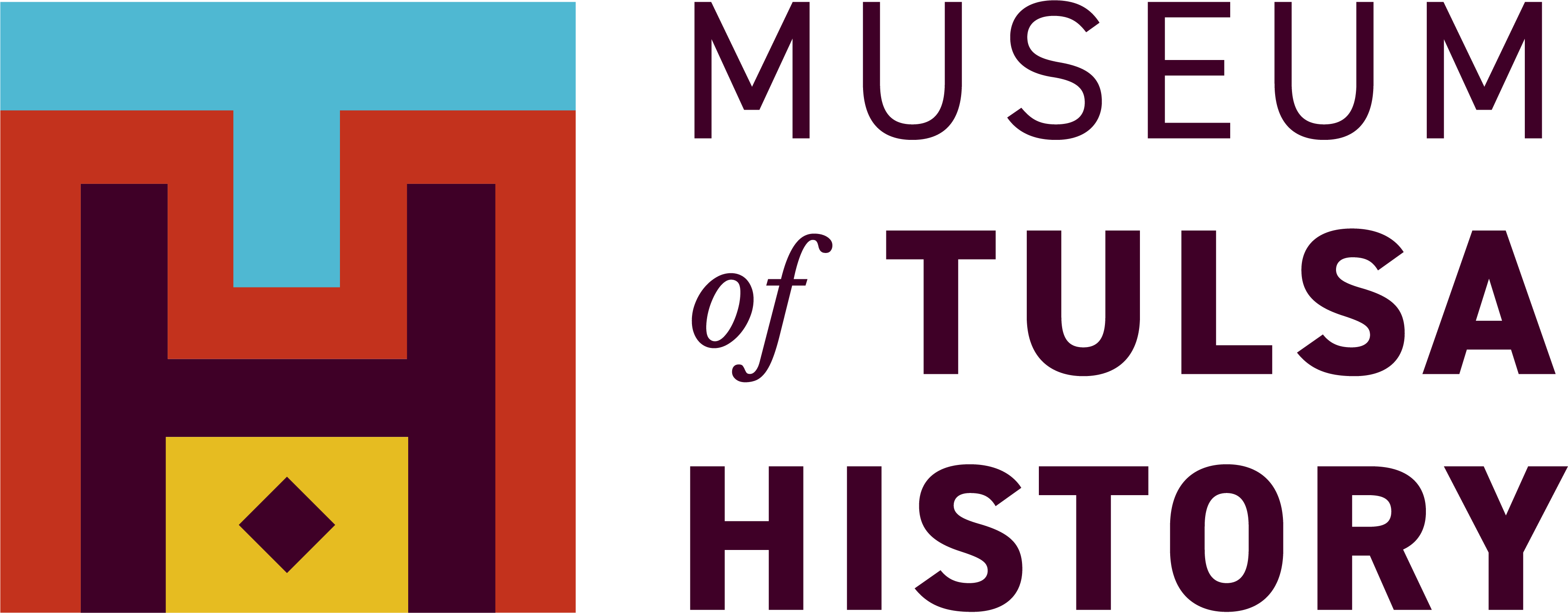Photo Record
Images

Metadata
Catalog Number |
2022.190.1851 |
Collection |
Hawks, Bob |
Object Name |
Negative, Sheet Film |
Date |
circa 1948 |
Photographer |
Hawks, Bob |
Description |
Black & white sheet film negative measuring 5" x 4" and depicting the airplane hanger for Tulsa Flying Service, located at the Commercial Airport on the northwest corner of 61st Street and South Yale Avenue in Tulsa, OK, circa 1948. Some of the aircraft in this view are surplus military aircraft left from World War II. The airport began in 1928 as Garland Airport, located at 51st Street and South Sheridan Road in Tulsa. On August 5, 1932, A. M. Harrall organized Tulsa Commercial Airport, Inc. On December 1 of that year, Garland Airport was renamed Tulsa Commercial Airport. In June 1940, the airport moved to a new field located at the northwest corner of 61st Street and South Yale Avenue. The airport consisted of a 150-acre tract with two hangers to accommodate fifty airplanes. The airport was a port for civil aviation and private pleasure aircraft. It also was home to several air schools including Oklahoma Military Air and Tulsa Flying Club. John N. Armstrong managed the airport. On January 25, 1943, a group of Tulsa businessmen, who were also members of the Civil Air Patrol, incorporated the Commercial Airport of Tulsa, Inc. The new corporation was formed to manage the airport under the leadership of L. L. Dresser, president. That arrangement was short lived. On October 19, 1945, airport landowner A. M. Harrall reorganized the company under the legal name Commercial Airport, Inc. In June 1949, three new concrete runways were poured at Tulsa Commercial Airport: one measuring 3,200 feet, one measuring 3,000 feet, and the third measuring 1,200 feet. Each was fifty feet in width. Taxi strips and parking aprons were also added, along with two new hangars. The entry into the airport from 61st Street was also improved. In October 1953, A. M. Harrall formed Cherokee Airpark, Inc., with himself as president. Bob Gallant served as the vice-president and manager airport. A new runway sign for pilots was installed in the middle of the diagonal runway with letters spelling "Cherokee" large enough for a B-47 pilot flying at 15,000 feet to read it clearly. By this time, the airport contained three metal hangars and served as base to sixty-five airplanes. The Cherokee Airpark became home to the Ross School of Aviation offering private pilot courses. In September 1954, a group of Tulsa oilmen purchased Cherokee Airpark with the intent of turning the site into investment property. C. L. McMahon, Jr., Peter J. McMahon, and Robert D. Sheechan purchased 120 acres of the airport property. They announced the permanent closure of Cherokee Airpark would occur on Sunday, October 31, 1954. At its closure, the airport was one of five private airports in Tulsa, but was the only one with paved runways. On November 1, 1954, black "Xs" were painted on the airport runways to signal the closure to pilots. For the following year, the concrete runways were used for automobile drag races. In 1956, planning began for a residential neighborhood developed on the site and the north-south runway became South Urbana Avenue. |
Search Terms |
airplanes airports Cherokee Airpark, Inc. Commercial Airport, Inc. Tulsa Flying Service |
Place |
Tulsa, OK |
